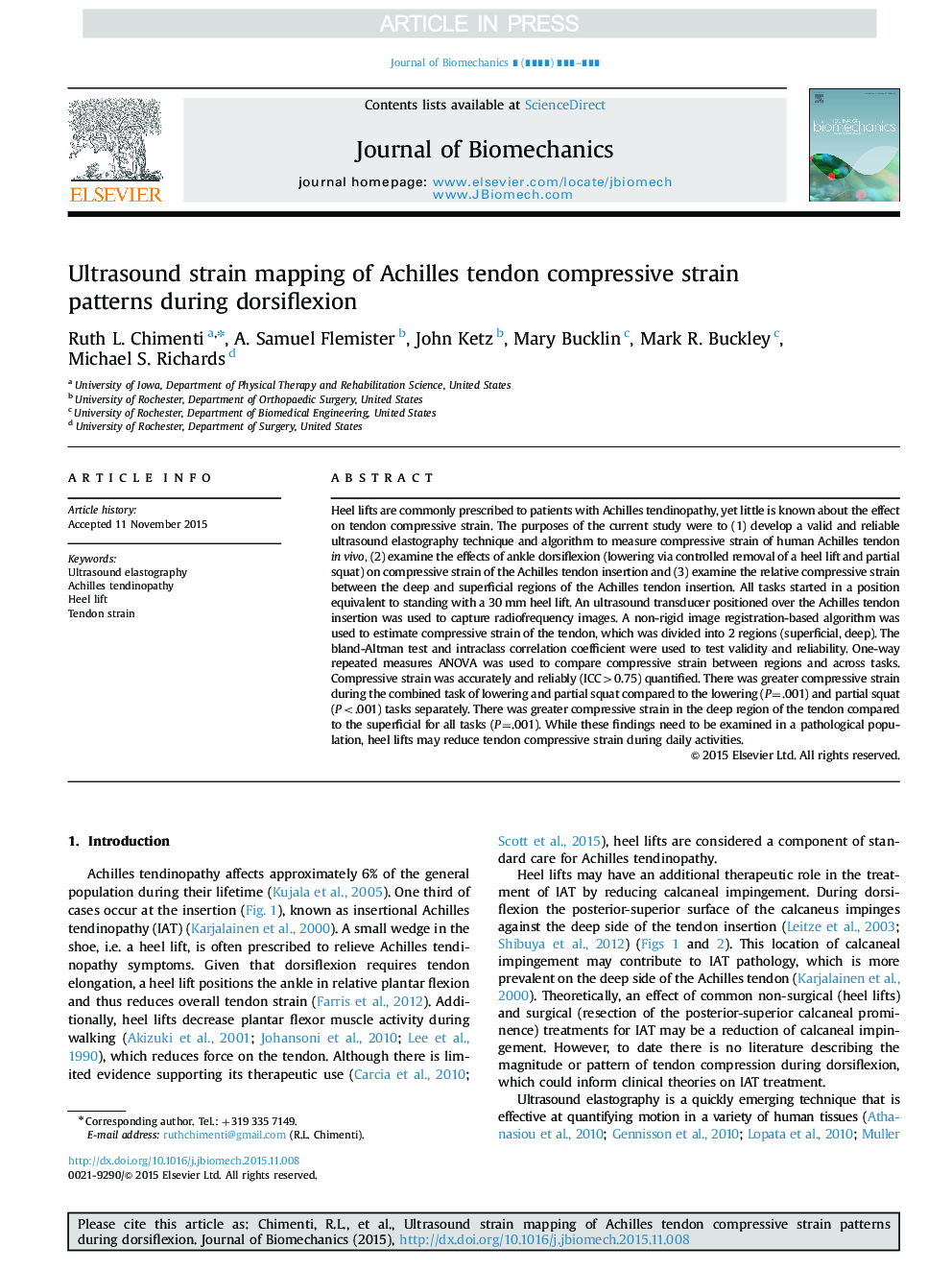| Article ID | Journal | Published Year | Pages | File Type |
|---|---|---|---|---|
| 10431190 | Journal of Biomechanics | 2016 | 6 Pages |
Abstract
Heel lifts are commonly prescribed to patients with Achilles tendinopathy, yet little is known about the effect on tendon compressive strain. The purposes of the current study were to (1) develop a valid and reliable ultrasound elastography technique and algorithm to measure compressive strain of human Achilles tendon in vivo, (2) examine the effects of ankle dorsiflexion (lowering via controlled removal of a heel lift and partial squat) on compressive strain of the Achilles tendon insertion and (3) examine the relative compressive strain between the deep and superficial regions of the Achilles tendon insertion. All tasks started in a position equivalent to standing with a 30Â mm heel lift. An ultrasound transducer positioned over the Achilles tendon insertion was used to capture radiofrequency images. A non-rigid image registration-based algorithm was used to estimate compressive strain of the tendon, which was divided into 2 regions (superficial, deep). The bland-Altman test and intraclass correlation coefficient were used to test validity and reliability. One-way repeated measures ANOVA was used to compare compressive strain between regions and across tasks. Compressive strain was accurately and reliably (ICC>0.75) quantified. There was greater compressive strain during the combined task of lowering and partial squat compared to the lowering (P=.001) and partial squat (P<.001) tasks separately. There was greater compressive strain in the deep region of the tendon compared to the superficial for all tasks (P=.001). While these findings need to be examined in a pathological population, heel lifts may reduce tendon compressive strain during daily activities.
Related Topics
Physical Sciences and Engineering
Engineering
Biomedical Engineering
Authors
Ruth L. Chimenti, A. Samuel Flemister, John Ketz, Mary Bucklin, Mark R. Buckley, Michael S. Richards,
